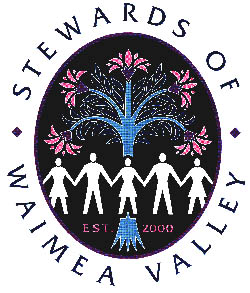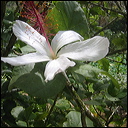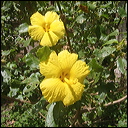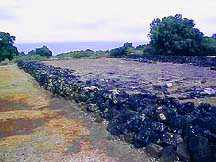Senator Robert Bunda
President of the Senate
State of Hawai'i
(excerpts)
click here for the full text
of Senator Bunda's letter
To: Members of the Honolulu City Council
I strongly encourage the City Council to reject the current settlement offer regarding Waimea Valley that could potentially lead to division of ownership of the valley. I urge you to trust instead in the judicial system that is in place to resolve these very issues...
[Waimea Valley is] one of the last pristine valleys on Oahu zoned entirely for conservation purposes; it is clearly a gem that is invaluable and a legacy that should be passed on, intact and whole, to our children...
I pledge my support to search for opportunities to partner not only with the City, but also with the federal government and private corporations and environmental/conservation organizations... Together, as a community, we can take the actions that responsible stewards should take to protect this aina.
return to top
Jim Case
Carlsmith Ball LLP
Attorneys at Law, Honolulu, HI
December 7, 2005
The Honorable Donovan Dela Cruz, Chair
and Members of the City Council
Honolulu Hale
Honolulu, Hawaii 96813
Re: Testimony in Opposition to Proposal to Settle Condemnation Lawsuit Entitled City and County of Honolulu v. Attractions Hawaii, et. al.
Dear Chairman Dela Cruz and Members of the Council:
I am testifying against the recommendation by the Committee of the Whole that the City and County of Honolulu settle the condemnation lawsuit entitled City and County of Honolulu v. Attractions Hawaii et al.
I am writing this letter on behalf of The Stewards of Waimea Valley, a group of very concerned citizens and organizations on the North Shore who believe that the City and County of Honolulu ( (the "City") should not settle this condemnation lawsuit, but instead should proceed to trial with all deliberate speed.
The condemnation suit was brought for the purpose of preserving for this and future generations the entire ahupuaa of Waimea Valley. This was the intent of the City Council in 2001, and should remain the overriding objective of the City Council today.
The City is already in possession of the land; the only issue left for decision is the price which the City should pay the Landowner for the property. According to the condemnation law (Hawaii Revised Statutes Section 101-24), this price is the value of the property on the date on which the condemnation suit was filed in 2001. It is irrelevant that property values may have increased since the date the suit was filed; it doesn't matter.
click here
to see the full text of this important letter
return to top
Press Release
State Representative Brian Schatz
November 29, 2005
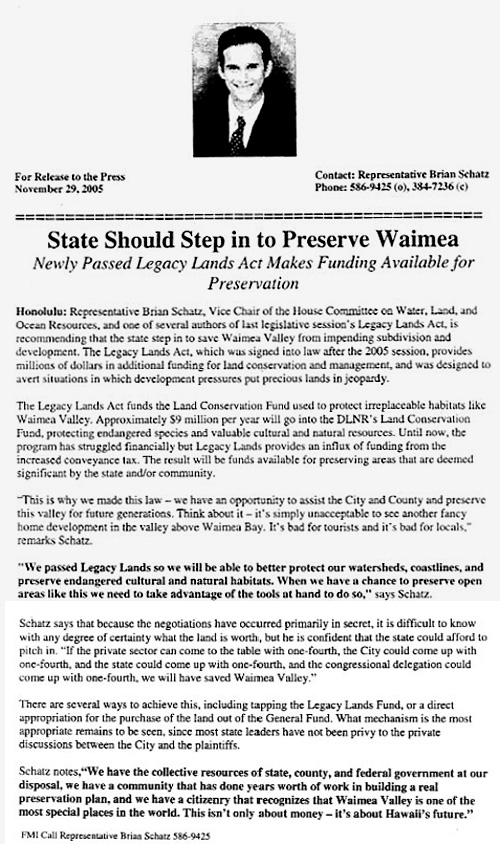
return to top
Letter from Butch Helemano
musician, Hawaiian activist, North Shore
E aloha mai........
E na,kanaka apau loa
As a native Hawaiian with direct lineal decent to the valley of Waimea, I am overwelmed with gratitude. To think that Waimea will be as it is for many generations is a blessing.
I wish my mother, who was full blooded Hawaiian, was alive to witness this major event. I am humbled by the support of the whole community.
Without them and people like Audubon and OHA, we would be in peril.
Mahalo no ko oukou aloha na mai ia ka po'e Hawaii.
Kahu Butch Kauhihmalaihi Helemano
Minister, North Shore O'ahu Nei
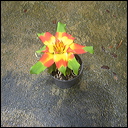
Council Testimony
from Diane Anderson
Sundance Realty, Haleiwa, HI
Dec. 6, 2005
Honorable Councilmembers,
I am writing in hopes that you will take a couple of minutes to read these few words regarding Waimea Valley. As a Realtor in the State of Hawaii for the past 28 years, I feel I can shed some light on the decision that you are faced with tomorrow when you cast your important vote about the fate of Waimea Valley.
I am saddened that the Mayor seems to be letting you, the Honorable Councilmembers, take all the heat and public responsibilty for such an important issue, while he remains silently on the sidelines. Being that the holidays are upon us, and a court date of Feb 13, 2006 looming, I can also understand that the attorney's with the Corp Council are also encouraging you to take the easy way out and "settle" out of court. It will take more time and effort on their part to go to court. However, that is exactly where this should be directed. The court is the "best" and most "open" way to represent the public interest and honor the City's promise to the community to keep the sacred land of Waimea Valley intact according to the Master Plan.
I just spoke with Harvey Shapiro of the Honolulu Board of Realtors to get this correct data for you to consider. Real Estate Prices in Hawaii have increased 98.4% between the last quater of 2001 and the 3rd quater of 2005. The land value of Waimea was "locked in" at the time of condemnation. On 6-28-2000 the listing agreement offering Waimea Valley for sale at $19 million between Attractions Hawaii and Coldwell Banker EXPIRED after being on the market for 366 days. MLS # 2006210. No takers! Why? It is so historic and culturally significant that it was virtually unsaleable as a private residence. The sellers disclosure mentioned nothing about the possibility of developing eco-cabins. It was offered simply as a "possible private residence". In my opinion, the seller fully intended to initiate a condemnation event and force the public to take action.
Although we can not know all the details of the settlement, we do know that this settlement proposal involves dividing up this Valley. This simply is unacceptable to the community at large and a sell-out of sacred land. Please trust that a jury will determine a "fair value" at the 2001 "conservation" appraised land value.
With the City and State together, and YOUR ONE VOTE, you can all make the Honorable decision here and protect this sacred treasure "intact". This can and should be your GIFT to our community. Please vote NO to the Settlement.
Thank you for your time.
Mahalo Nui Loa
return to top
Council Testimony
Na Leo Pohai, public policy affiliate
Hawaii Outdoor Circle
December 7, 2005
The Honorable Donavan Dela Cruz, Chair
Honolulu City Council
530 South King Street
Honolulu, HI 96813
RE: City and County of Honolulu vs. Attractions Hawaii et al., Civil No. 01-1-3622-12 GWBC, Circuit Court of the First Circuit
On behalf of Na Leo Pohai, the public policy affiliate of The Outdoor Circle, I would like to thank you for the opportunity to submit this testimony regarding the Council’s pending action relating to the disposition of the land in Waimea Valley.
More than five years ago we submitted testimony to the Council regarding Resolution 00-176, authorizing the mayor to enter into negotiations to acquire and preserve Waimea Valley for the people of Hawai'i. At that time we stated, “Rarely are we presented with such an opportunity to preserve a legacy for future generations. The unique natural, cultural and historic resources in Waimea Valley must be protected through responsible public stewardship.” The Council is presented with the same opportunity today. You must not allow your duty to the people of this island to be derailed by a misguided behind-closed-doors strategy that treats the public as if it is incapable of understanding the issues—and precludes us from working with you to devise a solution.
Waimea Valley is a treasure, not only because of the rich physical environment that includes the Waimea Valley Audubon Center, home of an ongoing effort to preserve and propagate native species, but also because of its rich cultural significance. Waimea is one of O'ahu’s last sacred valleys and must be kept intact from the mountain to the ocean. Allowing the land to be divided will doubtlessly lead to pressure for commercial and/or residential uses.
Either would result in the kind of desecration that other culturally and environmentally sensitive areas in Hawai'i have experienced. It is virtually guaranteed that any such efforts will result in the strongest possible opposition from North Shore residents and the legions of people and organizations across the islands. You can be assured that The Outdoor Circle will be among the many who will mobilize to save Waimea Valley. Please use your votes to protect our 'aina today.
Bob Loy
Director of Environmental Programs
Hawaii Outdoor Circle

Letter to the Editor
from Mahina Chillingworth
Hui O He'e Nalu, Da Hui International
Dec.2, 2005
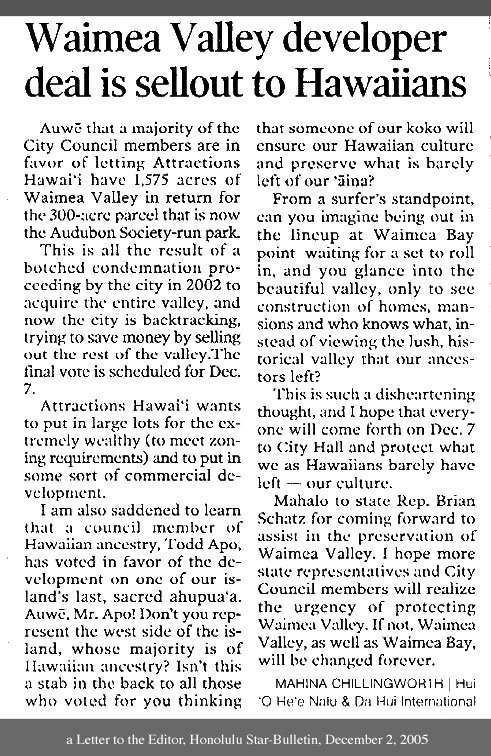
return to top

Council Testimony
from Prof. Dolores Blalock
former writer, Waimea Falls Park
Associate Professor, Communication Design
California State University
December 5, 2005
Honorable Members of the Honolulu City Council:
RE: PROTECT 1875-ACRE WAIMEA VALLEY
On December 7, I request that you do not sell this land--conservation-zoned Waimea Valley -- to Attractions Hawaii and C. Wolffer. Do not consider giving them 1500 acres of this 1875-acre valley for commercial development including tents, cabins, a tourist train, and several large houses.
The interior slopes of Waimea Valley have fragile sides with unstable, crumbly soil. Flash floods can occur during heavy rains. Ancient Hawaiian burial caves exist in the sides of the valley. Waimea Valley belonged to the kahuna nui, the high priests of the ruling chiefs of O'ahu for about eight centuries.
Before declaring bankruptcy, Mr. Wolffer's company had proposed big changes for Waimea that included time-share condos and two restaurants. Who knows what is planned now?
No current land-use permits exist for any of this. Even the original "wilderness cabins," each surrounded by five acres, received "approval in concept only" in the 1972 Master Plan. Today, this cabin concept can't pass environmental reviews. The "clusters of eco-cabins" planned in the recent past by Mr. Wolffer for his now-bankrupt adventure park have no permits at all--even in concept.
Community members gave the City Council a clear vision of protection for Waimea Valley--to conserve and restore native plants, animals, Hawaiian archeological sites, culture, and land. This valley, the entire ahupua'a, needs to remain whole.
It takes faith and vision to do the right thing. The money to purchase Waimea Valley at a fair market price can be raised.
For example, the recently passed Legacy Lands Act makes state money available for preservation. According to Representative Brian Schatz, the Legacy Lands Act "provides millions of dollars in additional funding for land conservation and management. It was designed to avert situations in which development pressures put precious lands in jeopardy." This offers a strong ray of hope. It is worth going to court to determine the fair market value of Waimea Valley.
A BETTER WAY
Many community members worked to design a better way for long-term benefits to occur on every level--including financial. Here is how.
The entire 1875-acre valley can become an outdoor school, a place for thousands of people to study in the future. Your children could take classes in stream life, in birds, and nature exploration. You, your family and friends could use the entire ahupua'a to explore and learn about the real Hawaii. Outdoor classes could focus on horticulture and native plants, hula, lomilomi massage, lei and ancient instrument making, archeology, Hawaiian language, music, crafts, and culture.
The entire valley can be a safe place for the threatened plants of Hawaii. For years, Hawaii's extinction crisis has been the theme of National Geographic books, videos, and magazine articles. (See the September 1995 issue, for example). This state has the highest extinction rate of native plants in the U.S. Waimea offers your chance to do something about it.
Think of Waimea Valley as an ark to save Hawaii's threatened plants--just as rare plants from the tropics worldwide are currently cared for and protected in the front of the valley. Hawaii's rare and endangered endemic plants need a place to grow. This takes acreage and commitment.
Bishop Museum archeologists surveyed only 100 acres in the front of the valley. This leaves over 1700 acres in need of archeological surveys. What will be discovered? We don't know yet. But archeologists could train interested people to help with outdoor research-- and public archeology could be an important part of future discoveries. The whole valley must be archeologically surveyed to study and restore the historical sites, the temples, and living areas.
IDEAL FUTURE
When I think of the ideal future for Waimea Valley, I see the back of the valley restored to a true, lowland native forest with acres of sandalwood trees surrounded by an intricate tapestry of many kinds of rare ferns. Endangered yellow hibiscus, Kanehoa mint, tree violets--among the many original plants--will have a place again.
For the first time you could experience what Hawaii looked like before both the Polynesians and other cultures arrived. Over 90 percent of Hawaii's lowland dry forests no longer exist-- lost to fire, development, agriculture or weed invasions. This is a strong reason to keep the land intact and to restore the native plants in the back of the valley.
I would like to see stands of wauke, paper mulberry, enough to make kapa (also called tapa cloth) using traditional techniques and dyes. Today you can see striking brown and black Samoan and Tongan tapa. But Hawaiian tapa had many ranges of textures from thick to thin...with a wide variety of lovely colors and designs. The revival of Hawaiian tapa could happen in Waimea Valley. Many acres are needed to grow Polynesian-introduced plants, too.
The last high priest of ancient Hawaii, Hewahewa, owned Waimea Valley where he is buried. His taro field near the mouth of the valley needs to be restored. But, in addition, a special taro used to make pink poi for the rulers (ali'i), grew in the valley. It's possible pink poi and many other kinds could be made again. This will take quite a few irrigated acres in rare taro.
The current botanical garden now has five trained gardeners and needs double or triple this number. Each plant in this wonderful garden is tracked with accurate records. In the back of the valley, the future botanical gardens of Hawaiian plants must be carefully documented, too. These records make the plants valuable for research.
Waimea needs to continue close ties with the Center for Plant Conservation, a non-profit network of institutions dedicated to conserving and restoring America's native plants. Their national collection helps protect endangered plants from extinction. The space to grow these plants exists in the back of Waimea valley. These acres are needed to protect Hawaii's plants for the benefit of everyone in the state and visitors worldwide.
Today, in the valley, you can see gentle nene geese waddle by, and slender black gallinules with red foreheads and long, red legs prance around the ponds. The valley can become a safe haven for many more native birds including the Hawaiian hawk, maybe even Honeycreepers or other very rare birds. The pueo owl, with dark-circled eyes, is considered one of Waimea's guardians or aumakua.
Remember, C. Wolffer and Attractions Hawaii hold no viable existing permits for commercial building on this conservation-zoned land with sloping sides, crumbly soils, and flash floods. The sale price needs to be limited to the real estate values in effect at the time of bankruptcy and condemnation of his adventure park.
It's important to follow the original plan at the time of condemnation, and go to court to determine the fair market value.
The City Council needs to keep the ahupua'a of Waimea intact. With protection, Waimea Valley will be recognized as an international treasure--and a welcome and spacious retreat for local residents who spend their lives on Oahu, the hub of the islands of Hawaii.
Then Audubon, the City Council, Office of Hawaiian Affairs, and community members can began to revive a place so lovely, powerful, and enchanting it will touch the lives of millions of people throughout the world--the ahupua'a of Waimea.
Protect and care for the sacred valley of Waimea.
Malama ia Waimea, ke awawa kapu o O'ahu. 'Onipa'a.
return to top

Council Testimony
from Evan Tector
Stewards of Waimea
Honolulu, HI
Dec. 7, 2005
Aloha Council-members,
Protection and preservation of Waimea Valley has concerned and occupied our island community for many years leading to the formation of one of the broadest based coalitions ever formed on O'ahu. Individuals, cultural practitioners, environmentalists, scientists and businesses came together with the single understanding of Waimea as a complete treasure and the best opportunity to preserve an intact culturally, botanically and archeologically rich ahupua'a and pass in on to future generations. National interest and recognition of Hawaii's unique roll in world diversity and education led to the involvement of the Audubon organization to manage of the community vision. This story is very close to a happy ending of government, public and private cooperation leading to the greater good. The last chapters remain finished but for leadership, courage, faith and time. Let's examine the role this Council has inherited.
Fiscal concerns often drive options and decisions. The Council exercises the specific responsibility for the the County operations and the public interest. Balancing the whole is the challenge. In the situation of Waimea Valley the public interest coalesced and and in 2001 the Council took action to condemn the property and bring it into alignment with proper stewardship and management. This condemnation froze the figures by which assessment will occur to determine the fair market value in the court phase. Public and private partnerships can work to make this a fiscally neutral decision for the County and Council and not cost the public needless millions more.
The County has already expended $5.2 million to cover what is likely to be the bulk of the expenses for full undivided control and protection of the valley. Consider that private interests, and perhaps the State, are open to and more able to make up any difference between the already committed funds and the assessed fair market value by the 2001 figures. If the Council divides the conservation portion of the valley, that difference is likely to be greater at 2006 figures and would vastly damage the ability of the public and government to regain control of the majority of land and raise the capital that would now be the difference of value accrued between 2001 and 2005 during this time of public control and ownership. Archaeological and cultural survey and continuing preservation would be pushed to the back. The difference established by the open public court process between the balance of the assessed fair market value in 2001 and the value created by a closed secret settlement would happen only by the Council relinquishing its and the public's right to a fair market establishment of value by the courts. In other words you, the County, can directly sell the public the difference whereas the former owner will charge us all over again for what we already own, short a few million. It is imperative for the Council to stay on track with a court assessed valuation so that the purchasing power of the already expended $5.2 million, undivided control and 2001 fair market value are not lost to the public.
This makes it clear that what is at stake requires the clear exercise of public interest by their trusted officials. You have only to stay the course, preserve the hard work and time we all worked for to get Waimea so close to safety and respect. Have faith that the broad spectrum of concerned and active organizations will continue to steward and fundraise to finance, manage and care for the valley. This will become possible and much easier once the title and management contracts are clear. Commit yourselves to partnership with your public and our many supporters in an open vs. secret process. You will have our respect and support for acting on our mutual interest. Have courage and faith. A whole Waimea Valley, as an open public preserve and culture center, will never come again. Will we pass on the natural spirit of Hawai'i or the shame of shortsightedness? Stay the course.
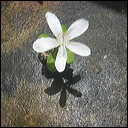
Council Testimony
from Michael North
Greenstar Corporation, Pupukea, Hawaii
December 1, 2005
Council Members and Staff:
Thank you for the opportunity to speak for one minute before the Council meeting on December 7, about the future of Waimea Valley.
Here is the substance of what I will say, along with some supplementary notes.
I am a North Shore business owner and property holder; my company, which does an international business in solar power systems, is Greenstar.
The business community understands the value of keeping Waimea Valley intact -- it is a prime visitor attraction, a keystone of property values on the North Shore, a potential source of many new jobs, and an underused source of sales tax revenue. Once the cloud of uncertainty about Waimea's long term status is lifted, the Valley will become a strong financial asset for the City -- as well as remaining the ecological, cultural, recreational, educational and historic treasure that it already is.
One of the ways this will happen is through local business investment and public/private partnerships; I'd like to share a concrete example with you.
Last year, four organizations created a new initiative called the Waimea Power Project. Representatives of Hawaiian Electric Company, InterIsland Solar, the Hawaii Renewable Energy Alliance, and Greenstar met with the people at Audubon in the valley. The Waimea Power Project made a preliminary set of written recommendations for improving energy efficiency at Waimea Valley, and for generating a substantial amount of its power needs through photovoltaic solar, biomass conversion, wind power and micro-hydro. We committed concrete resources to the program, which includes a public solar power display so that visitors could see and touch a working solar power array, understand how it works, and watch it generating power from the sun to do useful work in the Park.
A total of more than $100,000 in technology, products and services would be injected into Waimea by HECO, InterIsland Solar, the Hawaii Remewable Energy Alliance, and Greenstar, through this one initiative alone.
Going forward with Waimea Power Project awaits resolution of the status of the Valley. Business investors are not going to fund special projects when there is a chance that a private party will take them over, or that the unique, holistic nature of the Valley will be broken.
I urge you to vote against the settlement, and in favor of an open, public court procedure, in which the issue will be quickly and efficiently resolved so that we can all move forward.
Relevant links for you are:
HECO - http://www.heco.com - click Renewable Energy for Hawaii on the homepage
InterIsland Solar - http://www.solarsupply.com
Greenstar - http://www.greenstar.org
Waimea Power Project: see http://www.waimeavalley.org/waimea-power-project/outline.pdf
return to top
|
